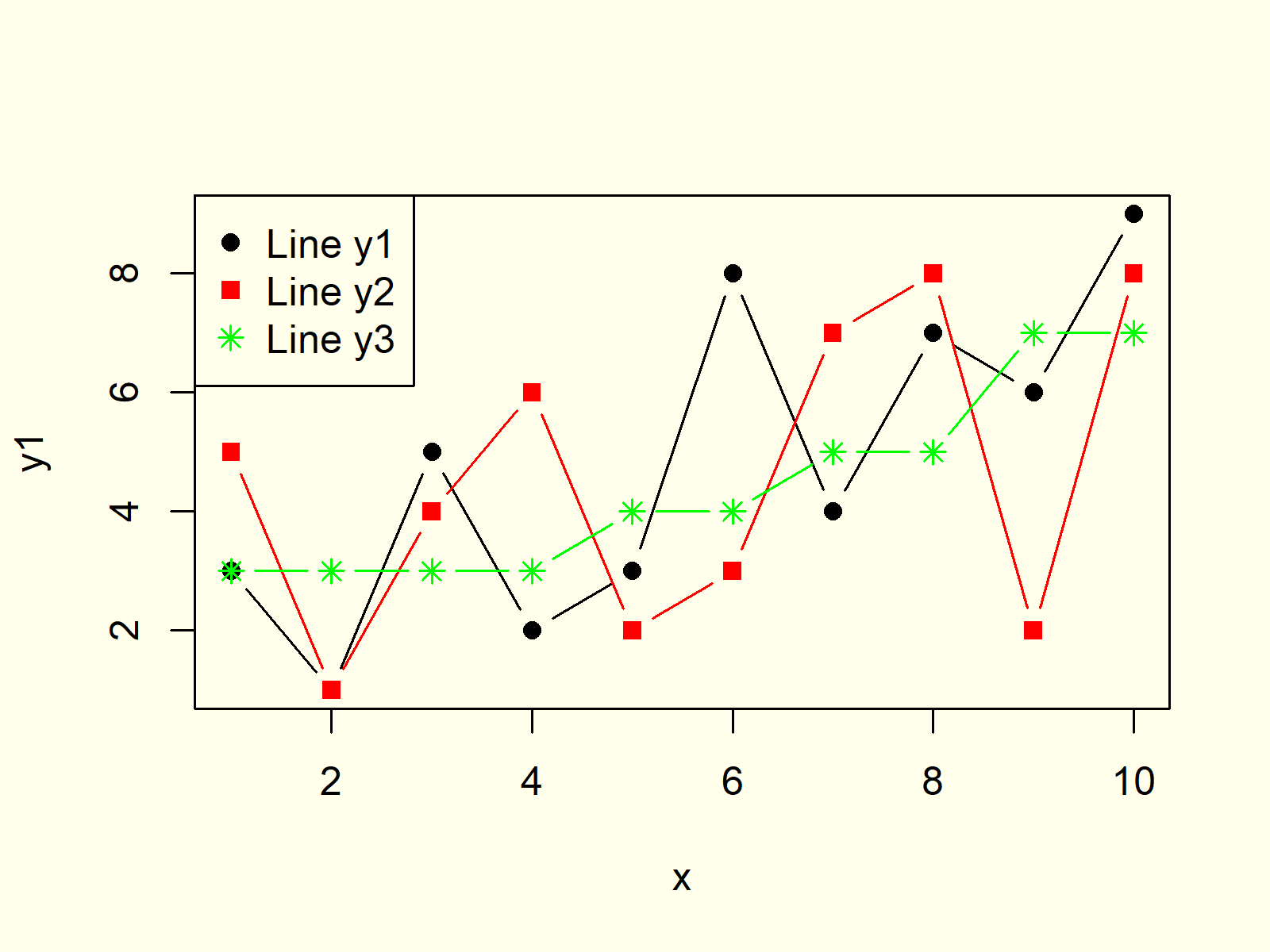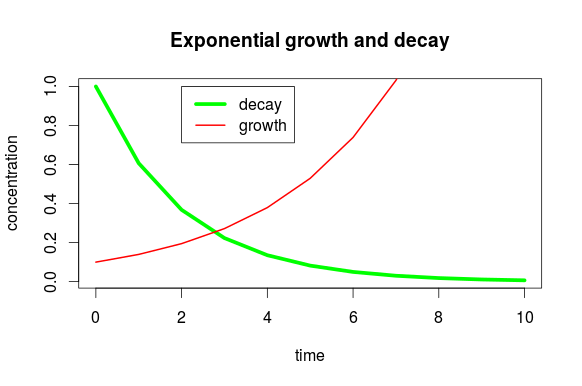
Plot(Girth, Volume, main = "Scatterplot of Girth vs Volume", xlab = "Tree Girth", ylab = "Tree Volume")Ībline(lm(Volume ~ Girth), col = "blue", lwd = 2)
Plot on same graph r code#
The chart created by the following code shows that there exists a good correlation between tree girth and tree volume. Plot(Girth, Height, main = "Scatterplot of Girth vs Height", xlab = "Tree Girth", ylab = "Tree Height")Ībline(lm(Height ~ Girth), col = "blue", lwd = 2) We have added a trend line to it, to understand the trend, the data represents.


The following code generates a simple Scatterplot chart. The chart gives the idea about a correlation amongst variables and is a handy tool in an exploratory analysis. This plot is a simple chart type, but a very crucial one having tremendous significance. + main = "Histogram of Tree heights with Kernal Denisty plot", Hist(trees$Height, breaks = 10, col = "orange", The following code does this, and the output is shown following the code. This offers more insights into data distribution, skewness, kurtosis, etc. To understand the trend of frequency, we can add a density plot over the above histogram. Hist(trees$Height, breaks = 10, col = "orange", main = "Histogram of Tree heights", xlab = "Height Bin") A simple histogram of tree heights is shown below. In R, we can employ the hist() function as shown below, to generate the histogram. The height of a bar is represented by frequency. This calculation is then used to plot frequency bars in the respective beans. Numerous variable values are grouped into bins, and a number of values termed as the frequency are calculated. HistogramĪ histogram is a graphical tool that works on a single variable. More details about the dataset can be discovered using? trees command in R. We shall now look into some of such important graphs in R.įor the demonstration of various charts, we are going to use the “trees” dataset available in the base installation. However, exploratory analysis requires the use of certain graphs in R, which must be used for analyzing data. If your legend is that of a color attribute and it varies based in a factor, you need to set the name using scale_color_discrete(), where the color part belongs to the color attribute and the discrete because the legend is based on a factor variable.A variety of graphs is available in R, and the use is solely governed by the context. If you want to remove any of them, set it to element_blank() and it will vanish entirely.Īdjusting the legend title is a bit tricky.

They need to be specified inside the element_text(). Adjusting the size of labels can be done using the theme() function by setting the plot.title, and. The ThemeĪlmost everything is set, except that we want to increase the size of the labels and change the legend title. Note: If you are showing a ggplot inside a function, you need to explicitly save it and then print using the print(gg), like we just did above. The plot’s main title is added and the X and Y axis labels capitalized. Gg <- ggplot(diamonds, aes( x=carat, y=price, color=cut)) + geom_point() + labs( title= "Scatterplot", x= "Carat", y= "Price") # add axis lables and plot title. However, no plot will be printed until you add the geom layers.
Plot on same graph r how to#
If you intend to add more layers later on, may be a bar chart on top of a line graph, you can specify the respective aesthetics when you add those layers.īelow, I show few examples of how to setup ggplot using in the diamonds dataset that comes with ggplot2 itself. The aesthetics specified here will be inherited by all the geom layers you will add subsequently. The variable based on which the color, size, shape and stroke should change can also be specified here itself. Optionally you can add whatever aesthetics you want to apply to your ggplot (inside aes() argument) - such as X and Y axis by specifying the respective variables from the dataset. Unlike base graphics, ggplot doesn’t take vectors as arguments. This is done using the ggplot(df) function, where df is a dataframe that contains all features needed to make the plot. The Setupįirst, you need to tell ggplot what dataset to use. The process of making any ggplot is as follows. The distinctive feature of the ggplot2 framework is the way you make plots through adding ‘layers’.
Plot on same graph r series#
Make a time series plot (using ggfortify)Ĭheatsheets: Lookup code to accomplish common tasks from this ggplot2 quickref and this cheatsheet.

You are just 5 steps away from cracking the ggplot puzzle. So leave what you know about base graphics behind and follow along. But, the way you make plots in ggplot2 is very different from base graphics making the learning curve steep. This tutorial focusses on exposing this underlying structure you can use to make any ggplot. Ggplot2 is the most elegant and aesthetically pleasing graphics framework available in R.


 0 kommentar(er)
0 kommentar(er)
